Content
Not all types of hydrangeas tolerate the harsh Russian winter well, so many gardeners grow them only in pots. In this case, the plants, after appropriate preparation, are removed to the room in which they remain until spring. Preserving hydrangea in a pot in winter is quite simple, you just need to provide it with suitable conditions.
How does hydrangea overwinter in a pot?
Hydrangea is a deciduous shrub, and under normal conditions it ends its growing season in the fall and goes dormant. Plants grown in pots behave in the same way. It is used mainly for large-leaved hydrangea species that have poor winter hardiness.
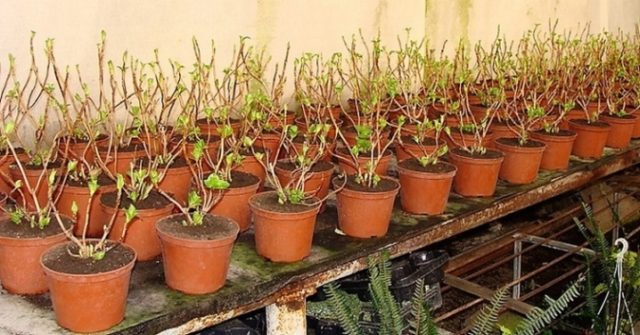
Large-leaved varieties overwinter well in pots
In autumn, the bright inflorescences on them gradually dry out, the leaves from the shoots begin to fly off, and the flow of sap inside slows down. From this point on, you should limit watering the plant. After the end of leaf fall, containers or pots with hydrangeas can be removed for the winter.
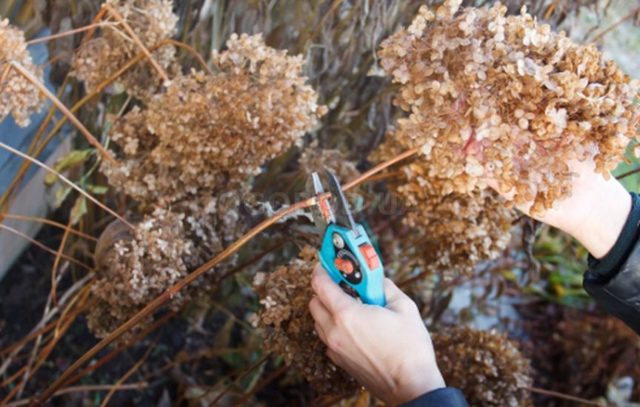
Dried inflorescences must be cut off before moving to wintering
To preserve hydrangeas in winter, you can use any room in which the temperature will be maintained during the winter close to 0 ° C. This could be a basement, subfloor, attic, stairwell, terrace, balcony. As a last resort, hydrangeas in a pot can overwinter at home if they are provided with the appropriate microclimate. During the winter, no manipulations are carried out with hydrangeas. You just need to control the temperature and humidity in the room, avoiding sudden changes. Plants require very moderate watering at this time. If the soil dries out, you can put some snow in the pots.
In March, pots of hydrangeas are removed from storage, moving to a warmer room or gradually increasing the temperature. In order for the plant to start growing, it is recommended to water the soil with slightly warmed water with the addition of water-soluble fertilizer (Fertika-Lux, etc.). It is advisable to add some special long-acting fertilizer to the soil. To prevent water from evaporating, the surface of the root zone is covered with a layer of mulch from old pine needles; it not only retains moisture in the soil, but also acidifies it.
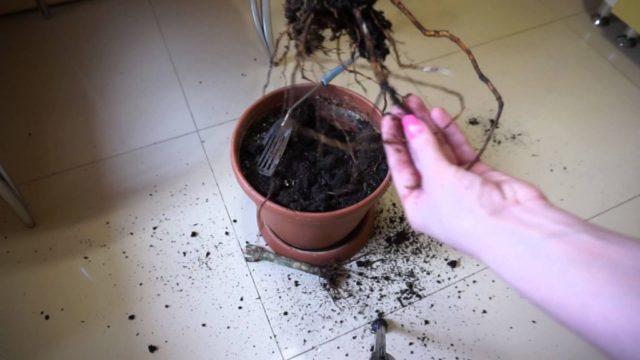
In the spring, you can transplant the overwintered bush into a larger pot.
At the end of April or beginning of May, hydrangeas begin to be exposed to the open air. At this time, return frosts are still possible, so if necessary, the bushes are covered with spunbond.
How to preserve hydrangea before planting in the ground
Winter preservation is required not only for potted plants, but also for seedlings that, for various reasons, were not brought into the ground in the fall. For example, you can preserve a cutting of paniculata hydrangea until spring in the same way by placing the pot with it for storage in a cool, dry room. Adult plants of this species have good frost resistance, so they usually overwinter in open ground.
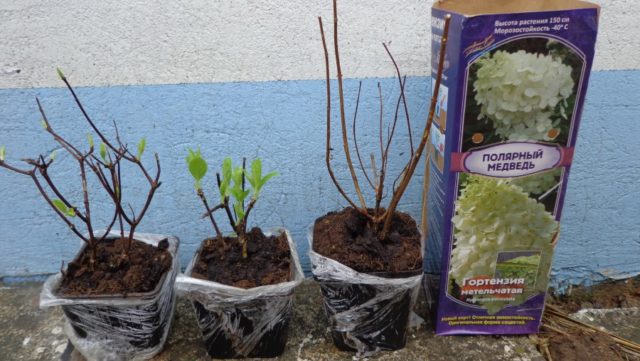
Seedlings ordered by mail are not always delivered on time
It is advisable to keep paniculate hydrangea in a pot in winter only in unplanned cases, for example, the seedling was ordered by mail and was delivered significantly late. In addition, mature bushes can also be stored for storage if there are doubts about their ability to survive the winter in open ground.
How to keep large-leaved hydrangea at home
The best place for winter storage of large-leaved species is a basement in which the air temperature does not rise above + 5-7 °C. If there is no special room, hydrangea in a pot can be stored until spring in the apartment, placing it on the coldest windowsill. It is important that when kept on a window, the flower does not receive direct sunlight; it is better to darken it slightly.

At home, the coldest window sill is suitable for wintering
To preserve hydrangea seedlings until spring, you can use insulated balconies and loggias; it is important that the thermal and light conditions are observed, and that there are no sharp fluctuations in temperature and humidity.Watering the plant in the winter should be reduced to a minimum, making sure that the soil under the flower does not dry out.
How to keep hydrangea in the basement in winter
The basement is the best place to store hydrangeas in winter. In the basement, the microclimate parameters are closest to optimal, and if they differ from them, then by a small amount. Here are their meanings:
- Lighting is minimal.
- Air humidity 60-70%.
- Temperature 0-4 °C.
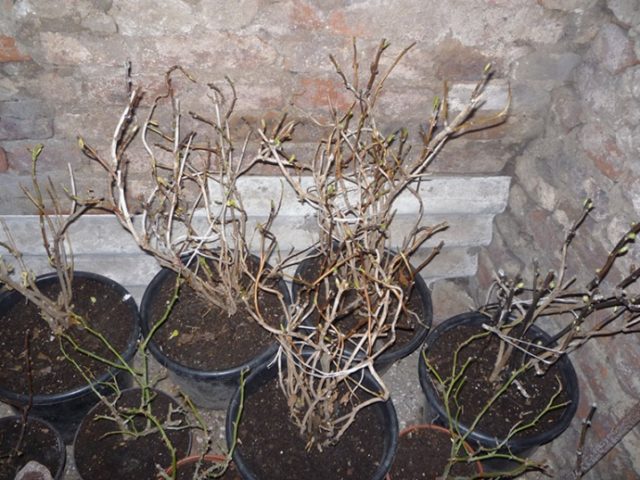
Hydrangeas are stored well in the basement all winter
Hydrangeas are removed to the basement after the first frost. Until this period, the flowers are kept in the open air so that the soil in the containers cools down gradually and the plant quietly goes into hibernation. Place pots with hydrangeas in such a way that during the storage period they are moved as little as possible. You also need to make sure that the branches do not come into contact with the walls of the basement.
There are several ways to store containers of large-leaved hydrangeas in the cellar:
- On the floor. The simplest method, which is used for small basement heights, as well as for large containers with hydrangeas. The advantage of this method is clarity, but in this case the pots take up quite a lot of space. Large bushes that were dug up specifically for wintering are usually kept on the floor.
- On the shelves. If the height of the basement and the size of the hydrangeas allow, then it is better to place the pots on special racks.So they take up much less space. However, it must be taken into account that plants located on the lower tier will receive less light; in addition, at the bottom of the basement there is always a higher concentration of carbon dioxide and the percentage of humidity.
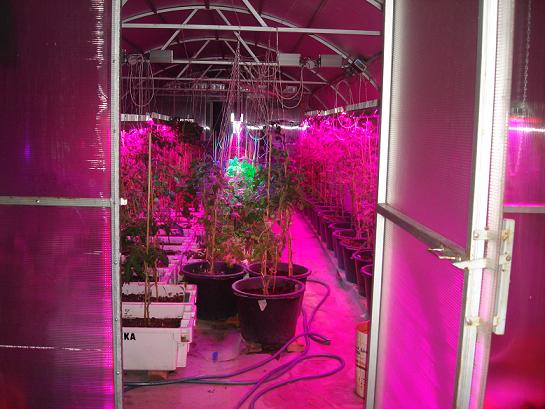
Daylight hours in the basement have to be regulated with phytolamps
Starting in February, the light regime needs to be changed, gradually increasing the lighting intensity. Often the meager light of the basement is not enough for this. In this case, you have to use special phytolamps for additional illumination.
How often to water a hydrangea in a pot
During hibernation, plants do not require full watering; it is enough to periodically moisten the soil in containers with water or snow so that the roots of the plants do not dry out. Excess moisture during hibernation is harmful; it can lead to mold and rotting of stems. In winter, hydrangeas should be watered no more than once a week and only when the soil dries out.
Advice from experienced gardeners
Hydrangeas have been grown successfully for a long time, even in areas with a cold, unfavorable climate. This is only possible with appropriate preparation of plants for the winter period.
Here are some tips from experienced gardeners that will help preserve hydrangeas in winter without damaging them:
- It is necessary to prepare large-leaved hydrangeas for wintering in advance. In September, many of the varieties still bloom, but at this time it is necessary to remove the foliage from the lower part to about half the height of the shoot.This promotes good ripening of shoots and increases the immunity of the plant as a whole.
Removing leaves from the lower half of the bush will quickly prepare the plant for winter.
- Large-leaved hydrangea cannot shed all its leaves for the winter on its own, but it is also impossible to leave them on the branches. This will cause rot to appear. Along with the dried inflorescences, you need to cut off the remaining leaves, leaving small petioles on the stem. After 1.5-2 weeks they will dry out and fall off on their own; if this does not happen, then you need to carefully break them off from the stem.
- Large hydrangea bushes are dug up and transferred for storage with a large lump of earth on the roots. If a container of suitable size cannot be found, the root system is wrapped in a piece of fabric or breathable covering material. Plastic film cannot be used for this purpose.
- Before digging up an adult hydrangea bush to move it for winter storage, it is advisable to cut out some of the old shoots.
- Digging work can only begin when the air temperature drops to 0 °C. If you do this earlier, the plant may not have time to go into dormancy.
- Large bushes, together with a lump of earth on the roots, can have a lot of weight, so it is better to dig them up together with an assistant. This way there is less chance of damaging the plant when removing it from the hole and moving it for winter storage.
To move large bushes, it is better to use help
- If the temperature and humidity rise in the basement where the hydrangea is stored, the plant may begin to grow prematurely. This will not lead to critical consequences, but will create inconvenience for the owner, since it will require additional labor costs for lighting and constant watering.
- Excessive humidity in the basement often provokes rot on the plants stored there. To avoid this, the premises must be regularly ventilated. You can reduce air humidity using quicklime, containers with which are placed throughout the basement.Important! Quicklime poses a serious danger. When working with it, you must take all precautions and be sure to use personal protective equipment.
- Containers in which hydrangeas are stored over the winter must have drainage holes. Otherwise, stagnation of water will cause root rot and death of the plant.
Conclusion
Preserving hydrangea in a pot in winter is quite easy if you carry out all the preparatory measures in time and find a suitable room. As a last resort, flowers can be overwintered in an ordinary apartment, although this is inconvenient and will require additional costs. However, all the effort spent will pay off, because blooming hydrangea is a real decoration of the garden plot.
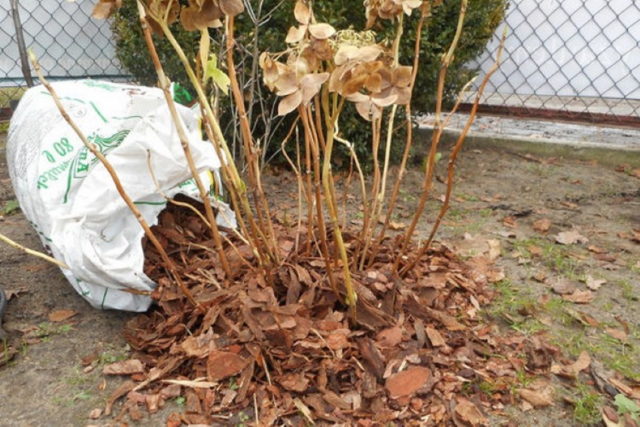
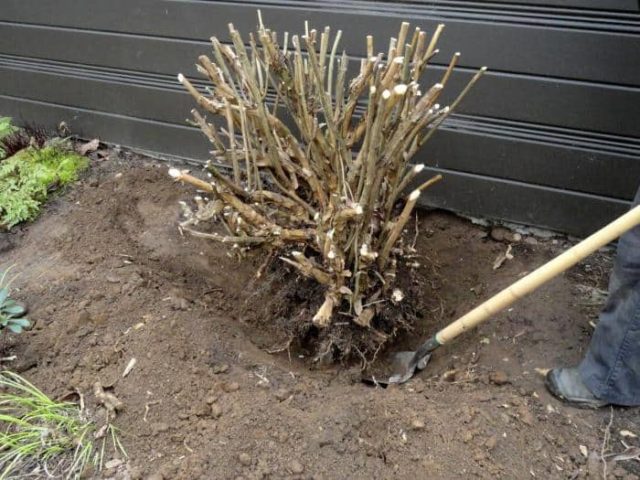
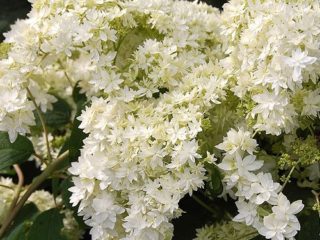

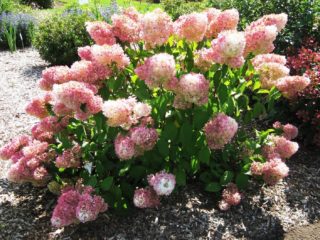


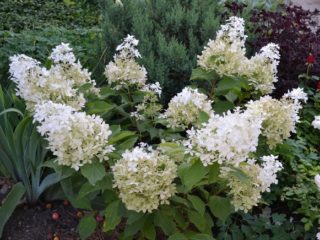
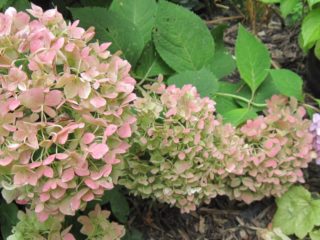

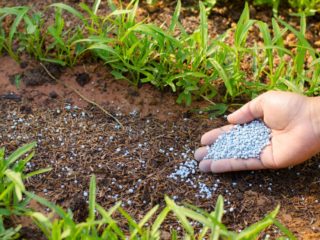
Good afternoon. I bought several paniculate hydrangeas ZKS R9. The place where I am going to plant is still occupied. So I don’t know whether to plant it and then transplant it to another place, or bury it in pots and cover it. Please tell me what is the best way to proceed .
Good afternoon.
It all depends on when you plan to transplant the hydrangea into the ground.
If it’s autumn, then you don’t have to plant seedlings. After all, you have them with ZKS. Just provide them with proper care: watering, fertilizing.
But if you are going to replant hydrangea in the spring, then it is better to plant the seedlings closer to autumn, and subsequently transplant them to a permanent place.